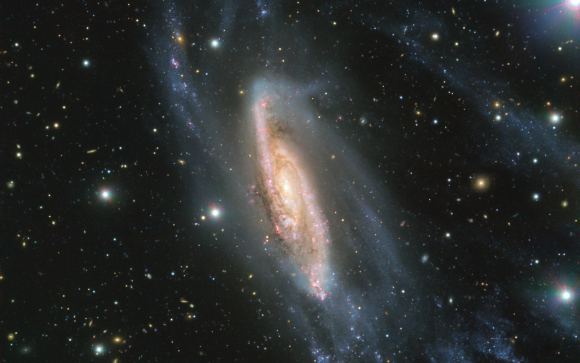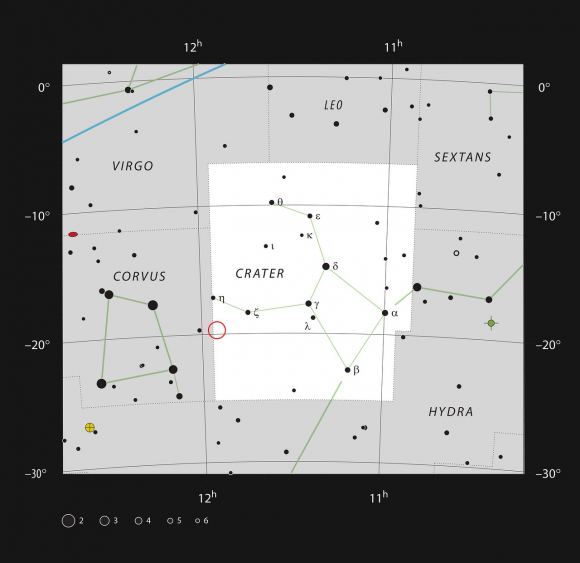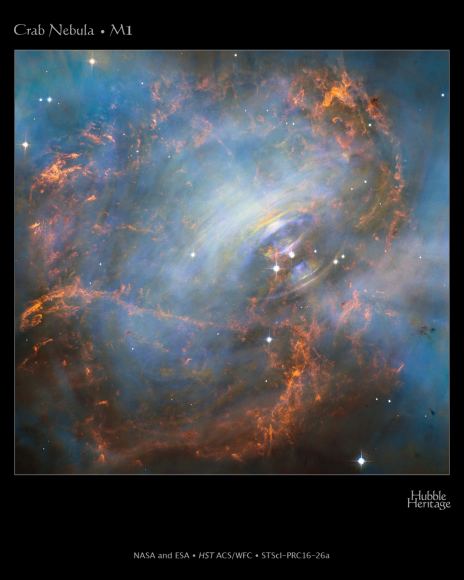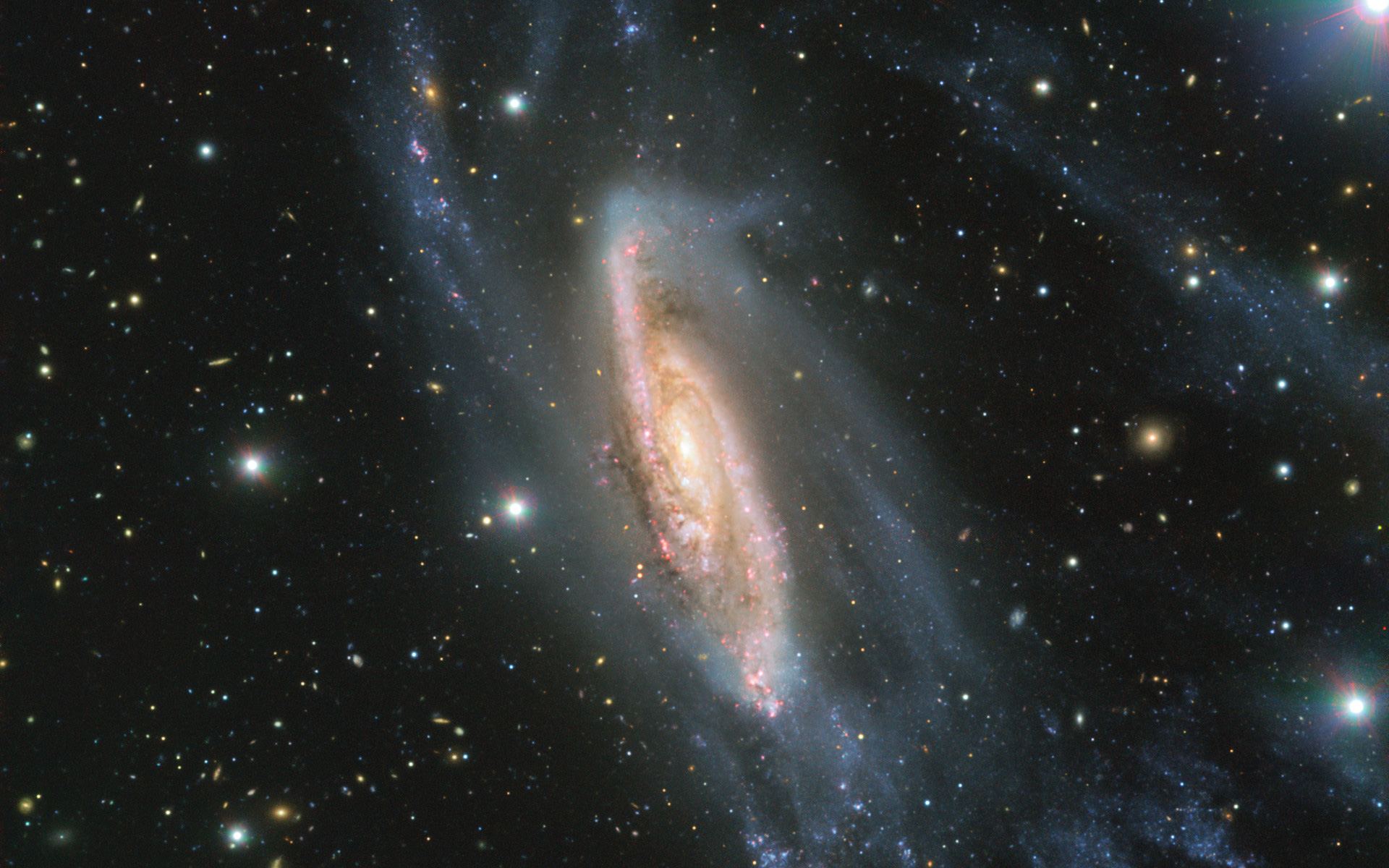The world’s most powerful telescopes have a lot of work to do. They’re tasked with helping us unravel the mysteries of the universe, like dark matter and dark energy. They’re burdened with helping us find other habitable worlds that might host life. And they’re busy with a multitude of other tasks, like documenting the end of a star’s life, or keeping an eye on meteors that get too close to Earth.
But sometimes, they have to take a break.
Sometimes, conditions aren’t right for powerful telescopes to pursue their scheduled mystery-unravelling work. At those times, they’re employed satisfying our appetite for stunning images of our universe. And the results can be awesome.
The ESO’s Very Large Telescope (VLT) recently had some unscheduled down time, and astronomers used that time to capture a glorious image of the spiral galaxy NGC 3981. The galaxy is in the constellation called Crater in the southern celestial hemisphere. It was captured by the FORS2 (FOcal Reducer and low dispersion Spectrograph 2) instrument on the VLT.

Because NGC 3981 is inclined towards Earth, astronomers are able to look right into the center of the galaxy. The bright center of the galaxy is dominated by a super-massive black hole (SMBH). The image shows the vast and delicate-looking spiral arms of the galaxy, which are star-forming regions full of dust. The disc itself is lit up with a host of hot young stars. Some of the spiral arm appears stretched out and misshapen, possibly due to an encounter with another galaxy at some time in the distant past.
NGC 3981 is about 65 million light years from Earth, but even at that great distance it is considered a neighbour of our own galaxy, the Milky Way. The large stars in the image’s foreground are stars in the Milky Way.
Near the top of the image, in the misshapen spiral arm, an asteroid is captured as it streaks across the sky. The asteroid is an unwitting clue into how astronomic images are captured in three separate exposures of red, green, and blue.

This outstanding image was captured as part of the ESO’s Cosmic Gems Programme. This program uses the astonishing power of the VLT to capture images of the southern sky when observing conditions prevent it from pursuing its science goals.
Observing time at telescopes like the VLT is portioned out strictly to researchers who are working on current problems in astronomy and astrophysics. But sometimes clouds roll in or the Moon is too bright, and science observations are not possible. When that happens, the telescope is handed over to the Cosmic Gems Programme. The ESO’s Cosmic Gems Programme dedicates general observing time at the VLT to meet its mandate of education and public outreach.
The Programme makes use of the VLT at Paranal and of the 2.2 meter MPG/ESO telescope at La Silla. The Programme chooses celestial objects that are visually interesting or intriguing, and for which no other high-quality images are available. The images are made available to the public, and to professional astronomers.
The European Southern Observatory is not the only organization with an initiative like the Cosmic Gems Programme. The Hubble Heritage Project has a similar goal. They are a group of individuals, some of whom have no astronomy or astrophysics background. They have taken it upon themselves to comb through the vast catalogue of image data from the Hubble’s decades of work, and to produce stunning images of visually interesting and intriguing objects out there in the cosmos.
The only problem is that the most intriguing objects of scientific study are not the most visually appealing. Thankfully, the Hubble Heritage Project has been granted a small amount of viewing time with the Hubble. This has not only provided additional scientific data, but has also allowed the team to generate some very compelling images of celestial objects which were not previously imaged by Hubble.

You can read about the Cosmic Gems Program here, and there is also an amazing gallery of images to peruse.
The Hubble Heritage Project is here, and they also have an outstanding image gallery.
But before you start clicking, you might want to grab yourself a snack. You’ll be busy for a while.

